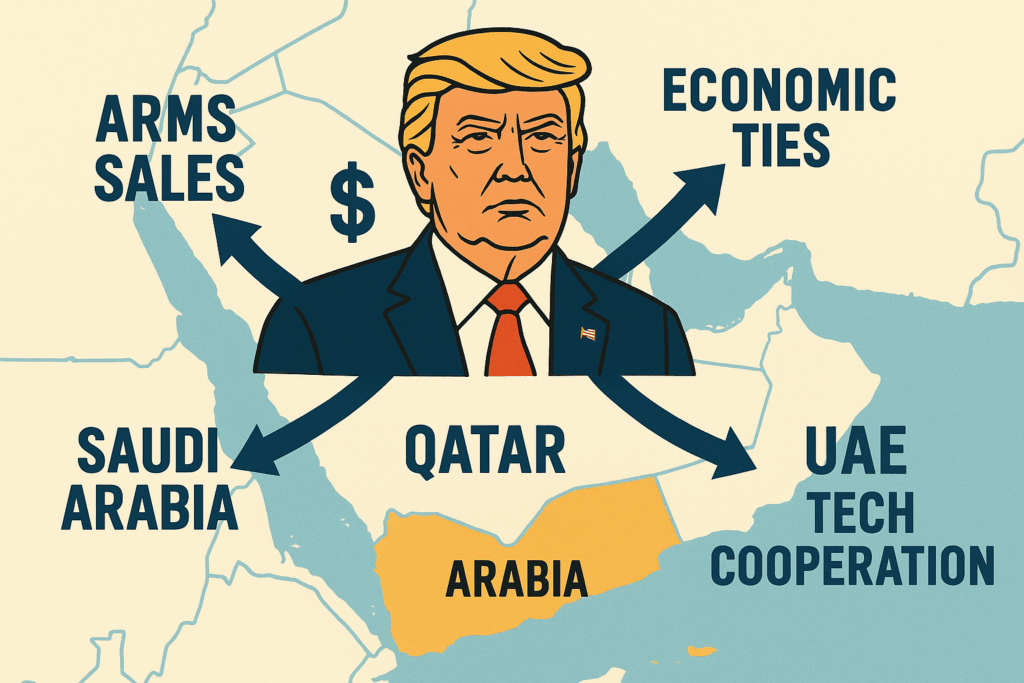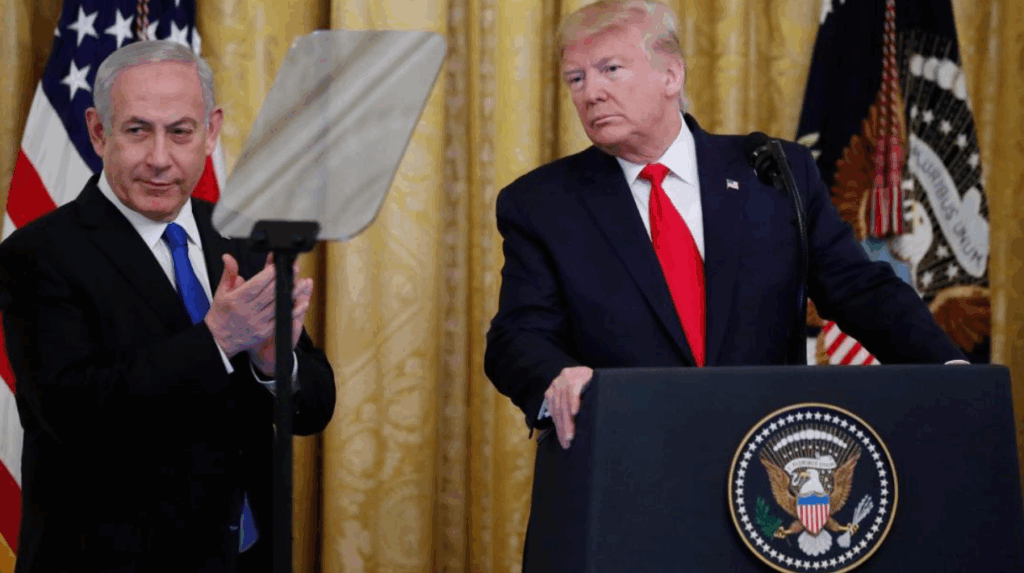Executive Summary
From May 13 to 15, 2025, President Donald Trump visited Saudi Arabia, Qatar, and the United Arab Emirates (UAE), marking his first major overseas trip in his second term. The visit resulted in unprecedented economic agreements, a diplomatic breakthrough with Syria, and renewed American engagement in the region, though it left some longstanding issues unresolved.
Background and Objectives
President Trump’s Middle East tour mirrored his 2017 itinerary, underlining the administration’s continued prioritization of the Gulf region. Accompanied by prominent U.S. business leaders-including Elon Musk (Tesla), Sam Altman (OpenAI), Larry Fink (BlackRock), and Jensen Huang (NVIDIA)-Trump sought to maximize economic outcomes and strengthen strategic alliances.

Major Economic Agreements
- Saudi Arabia: The visit yielded a $142 billion arms deal and a commitment from Saudi Arabia to invest up to $600 billion in the United States over the next four years. Crown Prince Mohammed bin Salman expressed ambitions to expand this partnership to $1.5 trillion, emphasizing a new era of economic cooperation.
- Qatar: Qatar signed a $96 billion agreement with Boeing and hosted a roundtable with American business leaders, further deepening bilateral economic ties.
- UAE: The UAE and the U.S. signed a landmark $1.4 trillion agreement focused on artificial intelligence and high-tech collaboration, positioning both countries at the forefront of global innovation.
President Trump highlighted these deals as proof that his administration’s policies continue to generate significant wealth and job opportunities for Americans.

Diplomatic Breakthrough with Syria
A major highlight of the trip was Trump’s announcement of the complete lifting of U.S. sanctions on Syria, signaling a dramatic policy shift. On May 14, Trump met with Syria’s interim President Ahmed al-Sharaa in Riyadh-the first meeting between U.S. and Syrian leaders in 25 years. Trump described al-Sharaa as a “determined leader and a warrior with a turbulent past,” framing Syria’s reintegration into the international community as a cornerstone of regional stability.
Regional Security and Unresolved Issues
- Iran Nuclear Issue: Trump indicated openness to renewed nuclear negotiations with Iran, a move met with concern by Israeli Prime Minister Netanyahu. While the topic featured in discussions, no concrete agreements were reached.
- Palestinian Issue: The visit notably lacked substantive engagement with the Gaza conflict. Arab leaders pressed Trump for a firmer U.S. stance on Israel, but no significant progress was made.
- Israel: Israel was not included in Trump’s itinerary, though he stated that a visit would occur in the future.
Analysis and Outlook
Trump’s Middle East visit reinforced U.S. economic and diplomatic influence in the region, particularly through historic investment agreements and the normalization of relations with Syria. The focus on economic diplomacy aligns with the administration’s “America First” agenda, promising domestic benefits as well as regional stability.
However, the absence of progress on the Gaza conflict and the ambiguity surrounding Iran’s nuclear program highlight the persistent complexities of Middle Eastern geopolitics. The success of Trump’s initiatives will depend on the implementation of these economic commitments and the administration’s ability to address unresolved security challenges.


